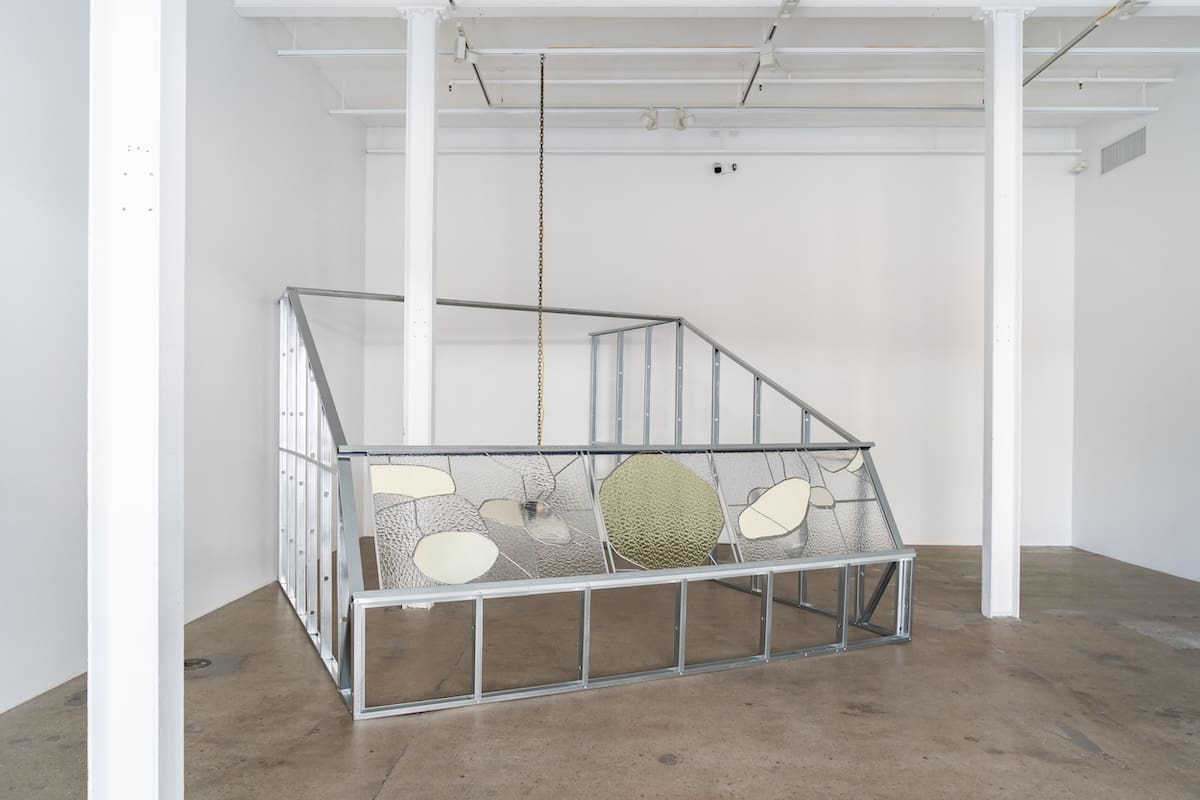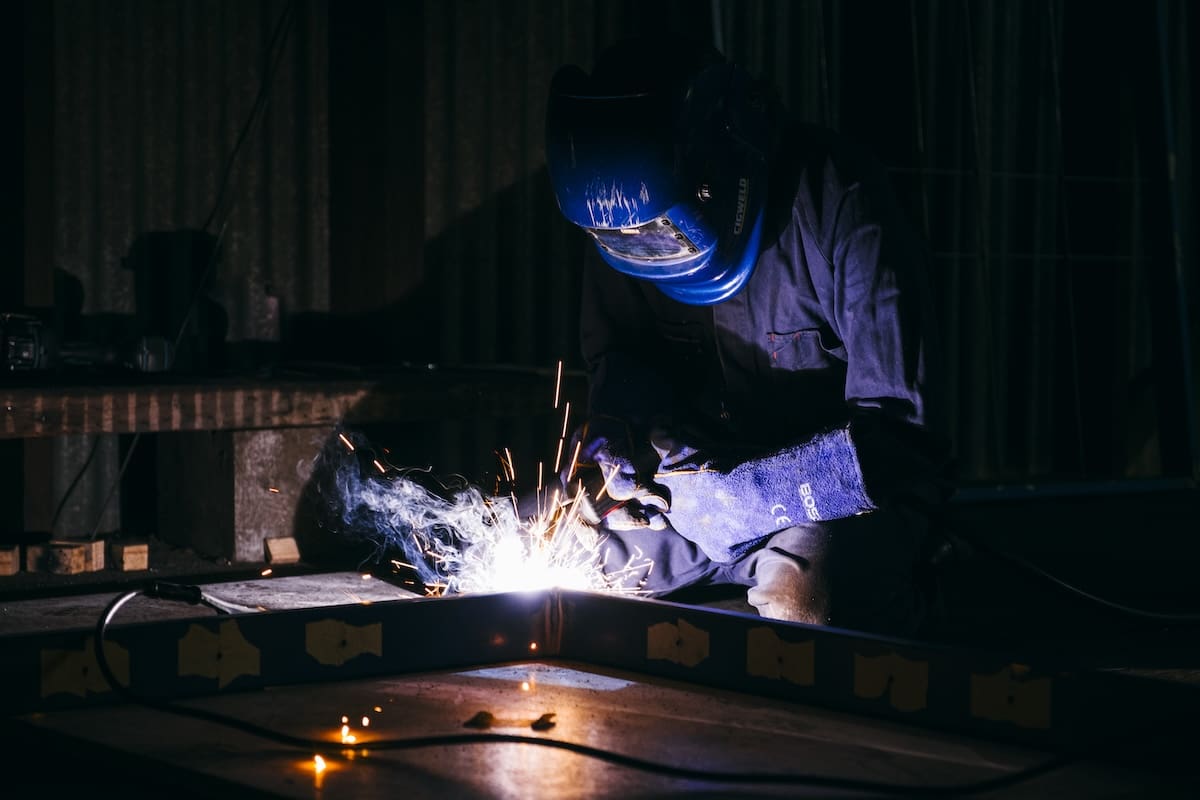
Place-driven Practice
Running for just two weeks across various locations in greater Walyalup, the Fremantle Biennale: Sanctuary, seeks to invite artists and audiences to engage with the built, natural and historic environment of the region.
Every few years artist Sarah Poulgrain finds themselves at home, thigh-deep in flood water and literal shit as the sewers overflow. Living and working in a warehouse in a once-wetland suburb of Brisbane/ Meanjin, Poulgrain’s living situation and art practice are increasingly indistinguishable. Together with Hailey Atkins and Anya Swan, they started renting the former wrecker’s workshop in 2017 and the process of making their live/work space both liveable and workable was a formative experience for Poulgrain, whose collaborative, collectivist practice focuses on community building through skill-learning and knowledge-sharing.
Unsurprisingly, over the last several years Poulgrain has been thinking a lot about the housing crisis and the cost of increasing environmental crises, as well as their desires for more practical exhibition outcomes and a more communal, sustainable future. Which is how they’ve come to be building a fully functional pontoon houseboat and floating artist-run initiative that will launch in mid-late 2025.
“I opted for a rental situation that folded my art production space into my living space while that was still a viable option, before all the disused industrial-commercial spaces had been turned into gyms and microbreweries. The houseboat project was conceived as a way to reduce some of the financial pressures of ongoing rental costs but living in a flood zone (in a property that also floods to ankle height several times a year) was definitely the biggest contributing factor to getting the boat started,” says Poulgrain.
For the artist, who also works part-time as a gallery collection officer, rental expenses account for about a quarter of their income. By Poulgrain’s calculations, they currently sit financially just above the latest poverty line for a single person. “Real estate costs are a huge factor in most people’s lives right now. I find myself constantly balancing time and available energy, health and capacity, money for essentials and money for my art practice.”
The ongoing housing crisis, with its myriad financial, emotional and social implications, was always going to critically impact artists and creatives. Setting aside the need also for affordable, long-term studio space, there’s the juggle and precarity of freelance and non-arts work, the generative importance of creative networks and community, and the reality of fewer professional opportunities, particularly for early and mid-career artists.
David Throsby and Katya Petetskaya’s major economic study in 2024, Artists as Workers, is a sobering 268-page testimony to many of these challenges. To read that more than 40 per cent of artists cannot meet their minimum income needs from all of their combined work earnings is not surprising when you learn that the mean gross creative income for a visual artist in Australia in 2021-2022—$22,500—has remained unchanged since 1986. And if an artist has moved four or more times in the last five years their income will have also steadily declined by as much as $15,000 annually.
Assuming artists can afford to move, the actual lack of housing makes it near impossible. Anglicare’s Rental Affordability Snapshot in March 2024 found that of 45,115 rental listings across the country, only 289 were affordable and appropriate for a single person earning a full-time minimum wage. Of these 289, 13 were in Greater Sydney and the Illawarra, 12 were in Brisbane, 22 were in Melbourne and 14 were in Perth.
According to researchers Throsby and Petetskaya, over 70 per cent of artists are living in major cities like these, and while Sydney is home to the largest creative workforce in the country, 2021 census analysis by the City of Sydney also shows that the number of artists, writers and musicians living there had decreased by 11 per cent over the last decade.
Much has been made of Sydney’s $20 million plan for more affordable creative workspaces but it still doesn’t solve the urgent lack of affordable housing.
Artists Claire Healy and Sean Cordeiro moved out of Sydney in 2011, buying a house two-and-a-half hours away in the Blue Mountains. “The only way we could do that was by living in Germany for seven years, with really cheap rent, saving all our income and having a sell-out show in the early noughties with Gallery Barry Keldoulis,” explains Healy. “We bought into Blackheath because our income as artists is so tenuous and changeable. A bank wouldn’t give us a loan, so we had to be really frugal and save and just pay cash. But there’s no way you could do that now, in this day and age,” says Cordeiro.
The couple, who are also artistic collaborators, recognise that the security of having a home and backyard studio allows them to take more risks creatively but in the early days of their career, a light-footed flexibility was important for their practice. “We just went wherever the opportunities were, which was usually in Europe or Asia. Our first child was literally born in an artist residency,” says Cordeiro. “I wonder how many opportunities there are to do those kinds of things today, especially for younger artists.”
Cordeiro is right to be concerned. Throsby and Petetskaya found that since 1986-1987 the proportion of artists under 34 has dropped from 38 per cent to 13 per cent. There’s no doubt that diminishing opportunities, as well as increased financial pressures and available housing and studio space, are contributing factors to that depressing statistic.
In the late 1990s Healy and Cordeiro were founding members of artist-run collective Imperial Slacks, alongside Shaun Gladwell, Angelica Mesiti and others. They lived and worked for several years in a five-storey warehouse in Surry Hills in Sydney, exploiting a brief window of lax zoning laws with landlords happy to rent spaces and turn a blind eye. “That critical mass and strong community, with a real geographic density, was such a beautiful thing,” reflects Cordeiro, and while he and Healy continue to collaborate, they recognise the importance of community. “Being able to work with people around you, having that input, you become part of a greater conversation,” says Healy.
Keg de Souza, a founding member of Squatspace, also remembers this time in Sydney and how valuable it was as an emerging artist just arrived from Perth. “When I was starting out, we made work out of nothing, but we were squatting [in empty buildings on Broadway] and paying a peppercorn rent. It feels like as the city grows, it’s becoming much harder to find those gaps and cracks. Without those warehouse spaces, what happens? It affects the whole cultural landscape.” De Souza’s practice interrogates the politics of space, colonisation, gentrification and displacement and her iterative project The School of Displacement has activated communities and conversations in Redfern, Newcastle, North Melbourne and Hervey Bay. “The regional town of Hervey Bay has a huge houseless community because locals are being pushed out by demands for Airbnb holiday homes and people leaving the city. The neighbourhood centre is basically working as a frontline refuge placing people in emergency accommodation.”
While admitting it’s been hard work, de Souza nevertheless feels privileged to be able to make her way as an artist in the city, but the long-term impacts of gentrification and housing instability trouble her. “Gentrification is a global issue but it’s all those different diversities—cultural, economic, social—that make cities what they are.” Like Healy and Cordeiro, de Souza thinks a lot about the challenges emerging artists face today, particularly after many years of practice. She also continues to find ongoing access to long-term studio space difficult. “To have a studio space is a total luxury. Many artists just make do with what they can but it’s a massive issue. I know so many people who have left the city for affordability reasons,” says de Souza.
Tian Zhang is a curator, writer and director of Pari, an artist-run initiative in Parramatta. After two years of undertaking residencies and subletting from friends she’s grateful to have a permanent home. “Psychologically it helps ground me. I prefer to live on Dharug Country but I didn’t have any control over where I was going before; it was always whatever was available.” In 2019-2020, she was awarded a City of Sydney live-work space in Waterloo. “When COVID hit and the Council waived our rent I felt this stress just leave my body. I hadn’t ever considered the physical impact of financial stress until I had that year rent-free.”
Zhang’s formative experiences of share houses in Brisbane came back to her in 2022, when she spent fifty days with Pari living in a dormitory in Kassel’s Museum Fridericianum alongside Indonesian collective Gudskul and 40 others as part of documenta fifteen. “The dormitory was out of necessity, but I think Gudskul were able to think creatively about how to use space. And maybe we don’t think that creatively here. Or we don’t want to.” The program, Sekolah Temujalar, connected different collectives who then ate, slept, lived and worked together exploring ideas of collectivity. In 2023, Pari brought this idea home with Lumbung in Western Sydney. “The lumbung concept is of the rice barn where everyone can pool their resources—their rice—so that anyone in the community can be fed,” explains Zhang.
“It’s a beautiful concept but you’ll find this strong sense of collectivity in many cultures; this idea that everyone deserves to be fed. I think here though, a lot of those practices have been erased through colonisation and capitalism.” In sharing lumbung with their wider community, Pari wanted to introduce a framework where the community can provide for itself. “This idea that we can pool our resources and come together if we’re all struggling.”
While housing continues to be seen as an investment and not a basic human right, a radical rethinking of resources and how we might foster communities and collectivise security feels morally and creatively critical. As Zhang notes, “insecurity can also lead to conservatism and a climate where people don’t want to rock the boat about bigger issues because they’re worried about their next paycheck.”
“It does come back to that sense of security,” she says. “If you don’t know that you’re going to be fed or that you will be housed, it’s so hard to create or to think about anything else. There’s no room to dream of a better world because you’re just surviving day to day.”
This article was originally published in the January/February 2025 print issue of Art Guide Australis.


